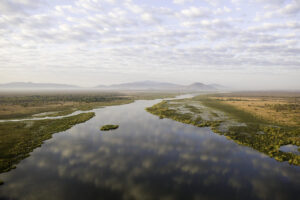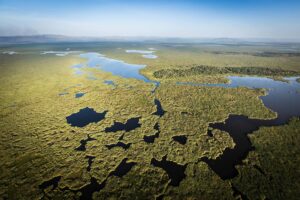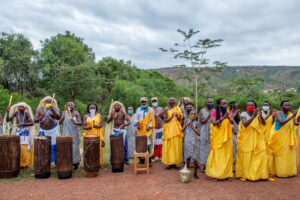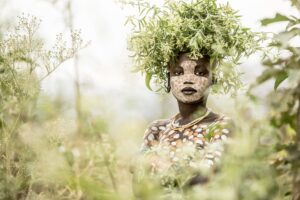Brief History
| The first inhabitants of Malawi are thought to have started settling around lake Malawi about 10 000 BC. During the 16th century AD there was a vast trading empire established by the Maravi people, from whom the country derives its modern name. The first European to make contact with the area now known as Malawi may have been the Portuguese explorer, Gaspar Bocarro, whose diary published in 1492 made reference to the great inland lake in Central Africa. The slave trade which ravaged most of Africa from the 16th century to the 19th century also left its imprints on Malawi’s historical development. The Arab slave traders arrived on the shores of Lake Malawi from Zanzibar Island in the Indian Ocean in search of slaves some time after 1840 and were to continue until late 19th century.
The history of modern Malawi is linked with the life of the Scottish missionary explorer, David Livingstone (1813-1873), who reached the lake he named ‘Lake Nyasa’ in 1859. Following his appeal to other missionaries to come and fight the slave trade in Central and East Africa, the first missionary expedition of the Universities Mission to Central Africa (UMCA) arrived in Malawi in 1861. However, it was not until 1875 that the first permanent mission was established at Cape Maclear on Lake Malawi by the Free Church of Scotland. In 1876, Blantyre Mission was established; this is one of the main seats of what is now know as the Church of Central Africa Presbyterian (CCAP). In 1884 the first European trading station was established in Karonga, Malawi’s northeast point. The political struggle against British rule in Nyasaland where the Africans were subject to many unfair practices, came to a head with uprisisng in 1915 led by John Chilembwe – considered the father of Malawi’s nationalism – in Chiradzulu district. Although the uprising was not successful, the Africans’ dislike of the British rule continued, and in 1944, the Nyasaland African Congress Party under the leadership of Dr. Hastings Kamuzu Banda in 1959 – was formed to mobilise the people to fight for their rights and ultimately achieve independence from Britain. In 1953, the Federation of Rhodesia and Nyasaland was formed despite African opposition. This meant that the British Government had virtually transferred its protectorate responsibility over Nyasaland to the white settlers of Southern Rhodesia. But African resistance to the federation, spearheaded by the then Nyasaland and Northern Rhodesia forced the British to shelve the idea. Location:Malawi is a landlocked country in Africa, south of Equator between latitude 9 degree 45¹ and 17 degree 16¹ south and between longitudes 33 degrees 36¹ east. It is 900 kilometres long, varying in width from 80 kilometres to 160 kilometres and covering an area of 118.484 square metres. The country is boarded to the North and North-East by the Republic of Tanzania, to the East, South and South-West by the Republic of Mozambique. The Republic of Zambia forms the western border.
Relief and Climate:Geographically, Malawi is dominated by Lake Malawi, which runs southwards parallel to the main strip of land. This magnificent body of water is 568 Kilometres long and 16 kilometres wide, accounting for 20 per cent of Malawi’s total surface area. The country has a varied topography of mountains and rivers, which have a direct effect on the climate with temperatures ranging from 14 degree C to 23 degree C along the lakeshore and Shire River valley areas. Seasons and Vegetation:Malawi has two main seasons, the dry and the wet. The wet season extends from November to April. Rainfall can reach between 635 mm and 3,050 mm, depending on altitude and position of the area. From May to august it is cool and dry. July is mid-winter month in Malawi. In September it is hot and dry with October and November as the hottest month with rains expected almost throughout the country. The predominant vegetation of Malawi is the savannah woodland. Ever-green forests are found where ground water is plentiful as in river valleys and on mountains. Grasslands are found on high plateaux and river basins. People and Culture:Malawi has a population of close to 20 million with several ethnic groups. The Chewa are found in central region. The Yaos are mostly found along the lakeshore districts of the central and southern regions. They are also found in Dedza, Machinga, Zomba, Blantyre and Chiiradzulu. Lomwes are mainly in the Shire Highlands areas of Thyolo and Mulanje while the Nkhonde, Lambya, Tonga and Tumbuka peoples are found in the Nothern Region. The Ngonis are found in both the Northern and Central Regions. All ethnic groups in the North, along with the Sena of Chikwawa and Nsanje in the South are patrilineal. The rest of Malawians are martrilineal.
Malawi prides itself with a mosaic of cultural practice and norms which make its people unique. The main traditional dances and rituals as well as arts and crafts found among the people act as an identifying factor for the many but united ethnic groups of the country. The dances of Malawi, for instance, have, deeper meanings than appears on the surface and accordingly, efforts have been made to keep these intact as part of Malawi’s cultural heritage and for posterity. As a way of achieving the goal of retaining the country’s traditional values, the Museum of Malawi conducts a series of cultural activities in schools and public places so that those who have no contact with village life can benefit from facilities offered by the organisation. Religion:The Malawi Government and its present leadership strongly believe in cooperation between the State and religious organisations for the socio-economic development of the country. There are in Malawi a wide variety of religious sects and denominations practicing their faith in an atmosphere of total freedom and tolerance. It is estimated that about half of the country’s population is Christian while Islam has over 12 per cent of Malawians as its adherents. Other faiths claim about 38 per cent membership. Religious freedom has, in turn, made it possible for the faithful to cooperate and participate fully in the task of nation building. The annual national day of worship ceremony every July clearly demonstrates how close and cooperative the different denominations and the government are in that all the major religious groupings participate fully in the programme. |







